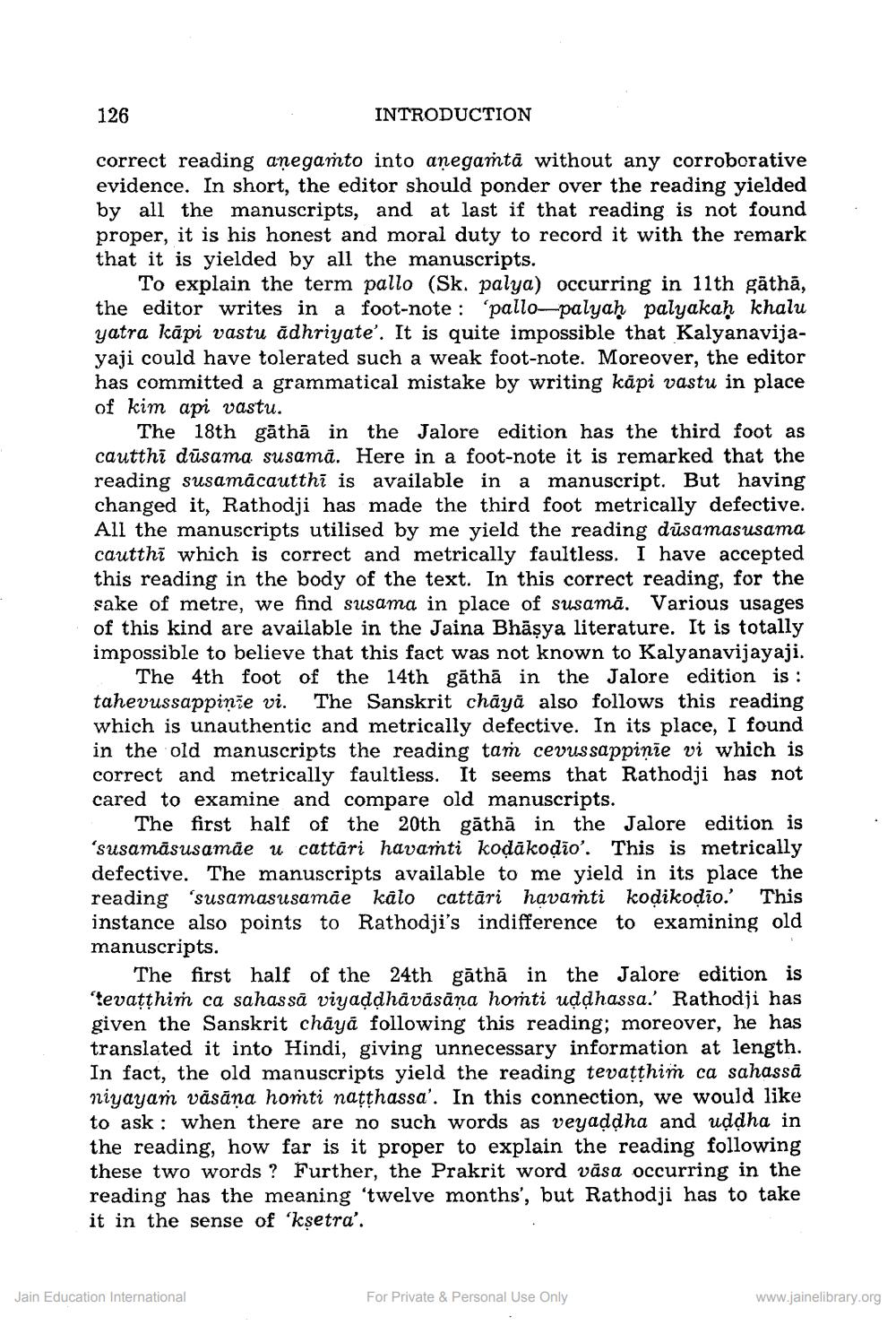________________
126
INTRODUCTION
correct reading anegamto into anegamta without any corroborative evidence. In short, the editor should ponder over the reading yielded by all the manuscripts, and at last if that reading is not found proper, it is his honest and moral duty to record it with the remark that it is yielded by all the manuscripts.
To explain the term pallo (Sk. palya) occurring in 11th gāthā, the editor writes in a foot-note: 'pallo-palyaḥ palyakaḥ khalu yatra kāpi vastu adhriyate'. It is quite impossible that Kalyanavijayaji could have tolerated such a weak foot-note. Moreover, the editor has committed a grammatical mistake by writing kāpi vastu in place of kim api vastu.
The 18th gāthā in the Jalore edition has the third foot as cautthi dūsama susama. Here in a foot-note it is remarked that the reading susamâcautthi is available in a manuscript. But having changed it, Rathodji has made the third foot metrically defective. All the manuscripts utilised by me yield the reading dusamasusama cautthi which is correct and metrically faultless. I have accepted this reading in the body of the text. In this correct reading, for the sake of metre, we find susama in place of susamă. Various usages of this kind are available in the Jaina Bhāṣya literature. It is totally impossible to believe that this fact was not known to Kalyanavijayaji.
The 4th foot of the 14th gathā in the Jalore edition is: tahevussappinie vi. The Sanskrit chaya also follows this reading which is unauthentic and metrically defective. In its place, I found in the old manuscripts the reading tam cevus sappinie vi which is correct and metrically faultless. It seems that Rathodji has not cared to examine and compare old manuscripts.
The first half of the 20th gāthā in the Jalore edition is 'susamāsusamãe u cattari havamti koḍākoḍio'. This is metrically defective. The manuscripts available to me yield in its place the reading 'susamasusamãe kālo cattari havamti kodikoḍio.' This instance also points to Rathodji's indifference to examining old manuscripts.
The first half of the 24th gathā in the Jalore edition is tevaṭṭhim ca sahassa viyaḍḍhāvāsāņa homti uddhassa.' Rathodji has given the Sanskrit chāyā following this reading; moreover, he has translated it into Hindi, giving unnecessary information at length. In fact, the old manuscripts yield the reading tevaṭṭhim ca sahassā niyayam vāsāna homti naṭṭhassa'. In this connection, we would like to ask when there are no such words as veyaḍdha and uḍdha in the reading, how far is it proper to explain the reading following these two words? Further, the Prakrit word väsa occurring in the reading has the meaning 'twelve months', but Rathodji has to take it in the sense of 'ksetra'.
Jain Education International
For Private & Personal Use Only
www.jainelibrary.org




